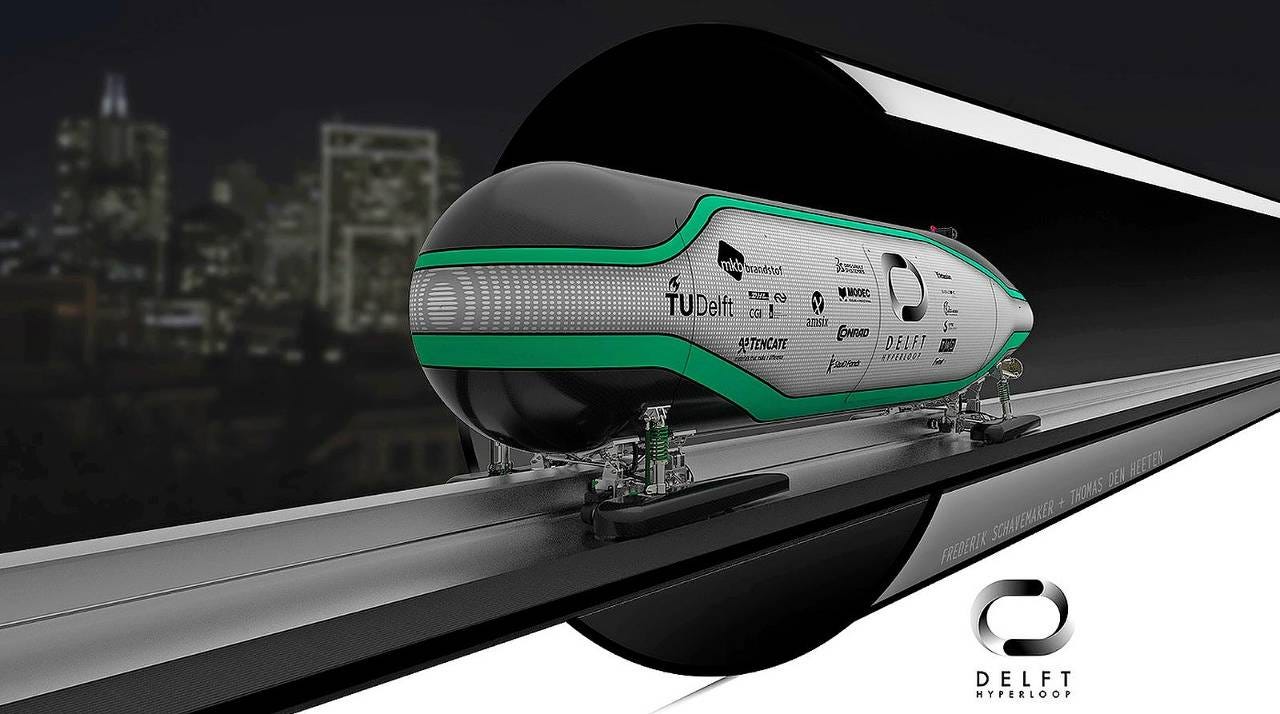Elon Musk's Hyperloop: Here's the Dutch team with designs on supersonic train concept

A computer simulation of an ultra-fast rail system designed by the TU Delft team, which came second in SpaceX's recent Hyperloop competition.
You might dismiss SpaceX's Hyperloop Design Pod Competition, which has just taken place at Texas A&M University, as merely another competition to provide students with a chance to show off technology skills.
But the track record of one of the participating teams, the Delft Hyperloop Team of the Delft University of Technology in the Netherlands, says a lot about how seriously it takes participating in engineering competitions.
In the end, the Delft team came second to engineers from the Massachusetts Institute of Technology, who won the design competition run by SpaceX, the rocket company led by tech entrepreneur Elon Musk. Hyperloop is Musk's idea for an ultra-fast rail system.
Hailing from more than 5,000 miles away from the Hyperloop's proposed site in California, the Delft team has a technical background that rivals that of any Silicon Valley engineering company.
All but 11 of the Hyperloop design competition's 127 participating teams came from US universities, where students typically design their projects as part of an extracurricular activity.
The Delft Hyperloop Team at work on their design.
But at Delft, design competitions take on a professional tenor, and taking a break from school to prepare full time for them is the norm. Ten of the Delft Hyperloop Team's 33 members took the rest of a school year off to work full time on the Hyperloop.
The Delft Hyperloop Team is one of TU Delft's DREAM Teams, a collection of student groups that aggressively compete in international engineering competitions.
They have a habit of winning or placing very high in every design competition they enter. One DREAM team, the Delft solar car racing team, has won first place at every World Solar Challenge since its first attempt in 2001, except for one year when it came in second. The solar car team consistently beats out celebrated rivals such as Stanford and MIT.
Many of the Delft Hyperloop Team's members come from TU Delft's largest DREAM Team, the Formula Student Team Delft. They bring with them 15 years of technical experience designing and building its winning electric Formula 1 race car.
Delft student engineers have built an international reputation with its lightweight designs, which the Formula Student community calls the Delft Concept. The cars get lighter with each year's iteration.
In 2015, the Formula Student Team Delft drastically reduced the weight of its car by introducing a carbon-fiber monocoque -- a single-piece chassis and body -- into the design.
The decision allowed it to achieve a higher power-to-weight ratio than that of any supercar in production and won the international race by a large time margin.
The Delft team tests their mock-up.
The Delft Hyperloop Team is using the Delft Concept to optimize both the speed and cost of its Hyperloop design. The Hyperloop's pressure capsule, like the car's monocoque, will be made up of carbon fiber.
In turn, the low weight will allow for a smaller engine and less massive tracking than a heavier vessel would.
Hyperloop team captain Tim Houter, who is taking a year-long break from his mechanical engineering program to lead the Delft Hyperloop Team, convinced his former Formula Student teammates to regroup on a formal Hyperloop team last year.
"Because we've been through all of it before, we know well what the pain points will be and can work through them," Houter told ZDNet.
Merel Toussaint, one of the Delft Hyperloop team's aerodynamics engineers, is optimizing the shape of the pressure capsule's tail to minimize drag.
While Toussaint can capitalize on her experience with road vehicle aerodynamics, she has needed to rely on numerical simulations to refine the capsule's design.
The Hyperloop pod needs to travel above the speed of sound, a design constraint for which no student engineer on the team has ever built a vehicle.
Even if the Hyperloop competition ultimately fails to make Elon Musk's original Hyperloop concept of going from San Francisco to Los Angeles in 30 minutes a reality, the Delft Hyperloop Team sees another market for its Hyperloop design. They imagine using it to travel from Amsterdam to Paris in 30 minutes.